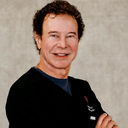Posted underBreast Lift with Implants q&a
I have wound breakdown after Breast Lift with Implants. Is this normal? Is there anything I can do to help the healing? (photos)
I had a breast uplift with implants 2.5 weeks ago, I had excessive wound fluid and when the dressings were taken off I had slight wound breakdown. The wound is getting bigger and more discharge, my surgeon said to keep clean and just put gauze in my bra which I am doing, but I have to change at least twice a day and the gauze sticks to my wound and when removes causes it to bleed. How long will this take to heal, is there anything I can do to help it along?
Answers (8)
From board-certified doctors and trusted medical professionals
Dr. Richard H. Tholen, MD, FACS

Dr. Richard H. Tholen, MD, FACS
Board Certified Plastic Surgeon
Answer
Dr. Ryan A. Stanton, MD

Dr. Ryan A. Stanton, MD
Board Certified Plastic Surgeon
Answer
Dr. Richard J. Bruneteau, MD

Dr. Richard J. Bruneteau, MD
Board Certified Plastic Surgeon
Answer
Dr. Jeff Angobaldo, MD

Dr. Jeff Angobaldo, MD
Board Certified Plastic Surgeon
Answer
Dr. Joe Gryskiewicz, MD, FACS

Dr. Joe Gryskiewicz, MD, FACS
Board Certified Plastic Surgeon
Answer
Dr. Robert M. Wald, Jr., MD

Dr. Robert M. Wald, Jr., MD
Board Certified Plastic Surgeon
Answer
Dr. Joseph B. Eby, MD, FACS
Dr. Joseph B. Eby, MD, FACS
Board Certified Plastic Surgeon
Answer
Dr. Brooke R. Seckel, MD, FACS (retired)
Dr. Brooke R. Seckel, MD, FACS (retired)
Board Certified Plastic Surgeon
Answer
More Breast Lift with Implants Questions
See all Breast Lift with Implants Q&AWE SEND PRETTY
EMAILS
What’s trending? Who’s turning heads? Which TikTok myths need busting? We’ve got you. No fluff, no gatekeeping—just real talk. Get our free, unfiltered newsletter.